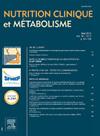微生物-肠-脑轴在肥胖和贪食症期间饮食行为放松调节中的作用:机制
IF 0.5
4区 医学
Q4 ENDOCRINOLOGY & METABOLISM
引用次数: 0
摘要
饮食失调(ED),特别是强迫性饮食失调(如暴食症(BED))在肥胖的病理生理中起着重要作用。最近的数据强调了微生物-大脑轴在饮食行为调节中的作用;因此,它的放松管制可能会通过ED的发展或延续而导致肥胖的发生,特别是BED。这篇综述强调了肠道生态失调和饮食行为紊乱导致肥胖和BED的各种外周和中枢病理生理机制。主要的外周调节信号涉及与食物摄入相关的肽(饥饿素,GLP-1),短链脂肪酸和细菌成分。调节食物摄入的外周和中枢信号的大脑整合,涉及稳态(下丘脑弓状核)和享乐(奖励系统)水平,将在BED和肥胖期间描述。更好地理解微生物-肠-脑轴在控制与肥胖病理生理相关的饮食行为中的作用,为针对肠道微生物群重塑的创新治疗策略开辟了前景。©2023法国社会组织(SFNCM)。Elsevier Masson SAS出版。版权所有。本文章由计算机程序翻译,如有差异,请以英文原文为准。
Rôle de l’axe microbiote-intestin-cerveau dans la dérégulation du comportement alimentaire au cours de l’obésité et de l’hyperphagie boulimique : les mécanismes
Eating disorders (ED), particularly compulsive ED such as binge eating disorder (BED), play an important role in the pathophysiology of obesity. Recent data have highlighted the involvement of the microbiotagut-brain axis in the regulation of eating behavior; its deregulation could therefore contribute to the onset of obesity via the development or perpetuation of ED, in particular BED. This review highlights the various peripheral and central pathophysiological mechanisms linking intestinal dysbiosis and the disruption of eating behavior leading to obesity and BED. The main peripheral regulatory signals involved are peptides associated with food intake (ghrelin, GLP-1), short-chain fatty acids and bacterial components. The brain integration of peripheral and central signals modulating food intake, involving at homeostatic (arcuate nucleus of the hypothalamus) and hedonic (reward system) levels, will be described during BED and obesity. This better understanding of the role of the microbiota-gut-brain axis in the control of eating behavior in relation to the pathophysiology of obesity opens up prospects for innovative therapeutic strategies targeting gut microbiota reshaping.
© 2023 Société francophone nutrition clinique et métabolisme (SFNCM).
Published by Elsevier Masson SAS. All rights reserved.
求助全文
通过发布文献求助,成功后即可免费获取论文全文。
去求助
来源期刊

Nutrition Clinique et Metabolisme
医学-内分泌学与代谢
CiteScore
0.80
自引率
16.70%
发文量
216
审稿时长
78 days
期刊介绍:
Nutrition Clinique et Métabolisme is the journal of the French-speaking Society of Enteral and Parenteral Nutrition. Associating clinicians, biologists, pharmacists, and fundamentalists, the articles presented in the journal concern man and animals, and deal with organs and cells. The goal is a better understanding of the effects of artificial nutrition and human metabolism. Original articles, general reviews, update articles, technical notes and communications are published, as well as editorials and case reports.
 求助内容:
求助内容: 应助结果提醒方式:
应助结果提醒方式:


